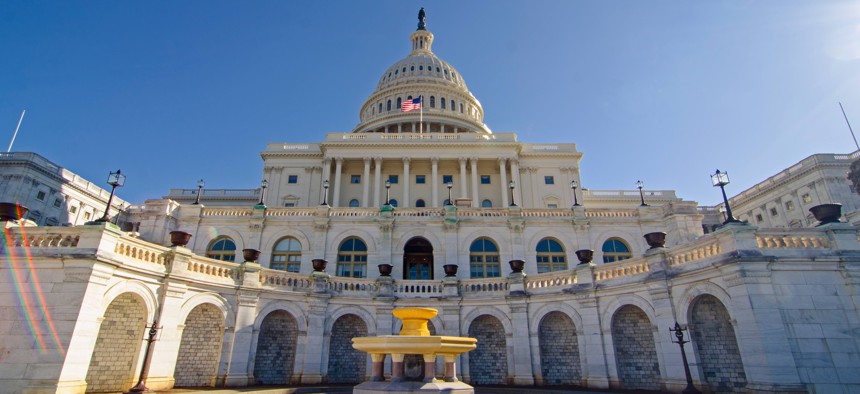Funding Steady for Environment, Interior Programs in Senate Bill

The U.S. Capitol. shutterstock

Connecting state and local government leaders
The draft legislation covers programs that help fund water infrastructure, and that provide payments to rural counties.
WASHINGTON — Legislation that cleared a Senate appropriations subcommittee on Tuesday would maintain current spending levels for federal water and sewer financing programs, and would fully fund payments to local jurisdictions with large tracts of public lands.
The fiscal year 2019 spending proposal for the U.S. Environmental Protection Agency and the Department of the Interior will advance to the full Senate Appropriations Committee with bipartisan support, as lawmakers agreed to avoid "poison pill" provisions.
Sen. Lisa Murkowski, the Alaska Republican who chairs the appropriations subcommittee responsible for EPA and Interior programs, said that committee leaders had worked out an arrangement so that controversial policy "riders," that had not already been passed through the committee and signed into law, would not be included in the spending measure.
"We know, that certainly in this subcommittee, where we have seen separation has been on the riders," Murkowski told reporters.
Sen. Tom Udall, of New Mexico, who is the top Democrat on the subcommittee, endorsed the draft bill. But he added that he strongly feels many EPA programs, including those providing grants to states, are underfunded and have operated at "freeze levels" for years.
Under the legislation, spending on the state drinking water and clean water revolving funds, which provide low-cost financing for water utility and sewer projects, would stay roughly flat at about $1.16 billion and $1.69 billion respectively.
Another financing program, the Water Infrastructure Finance and Innovation Act, or WIFIA, would also receive funding on par with fiscal 2018: $63 million.
The bill would fully fund estimated payments through the Payments in Lieu of Taxes, or PILT, program at $500 million. PILT is designed to compensate local governments with federal land within their borders that is not subject to property taxes, such as national parks and some military installations. It is a priority for many counties in the west.
Overall "discretionary" funding in the legislation for EPA, the Department of the Interior, and related agencies, would be about $35 billion, or around $601 million above current fiscal year 2018 levels, according to a Democratic description of the legislation. The actual legislative text was not released publicly on Tuesday.
Proposed spending to combat wildfires for the Department of Interior, and the U.S. Forest Service, which resides within the Department of Agriculture, is $4.3 billion in the bill, according to a Republican press release. This amount is equivalent to the 10-year average for fire suppression costs, and $900 million in added funding, the release said.
The Republican summary also said the legislation calls for so-called "categorical grant" programs that help states implement environmental regulations to be boosted by about $17 million.
Subcommittee members held off offering amendments to the legislation. A full committee hearing on the bill is scheduled for Thursday, when amendments are expected to be considered.
The 2019 federal fiscal year begins on Oct. 1. Guiding spending legislation for the upcoming budget cycle is a two-year budget deal that also covered fiscal 2018. The two-year framework included significant increases for many programs that funnel federal dollars to state and local governments.
This story has been updated with additional comment.
Bill Lucia is a Senior Reporter for Government Executive's Route Fifty and is based in Washington, D.C.

NEXT STORY: Seattle Leaders Set to Retreat After ‘Head Tax’ Furor





